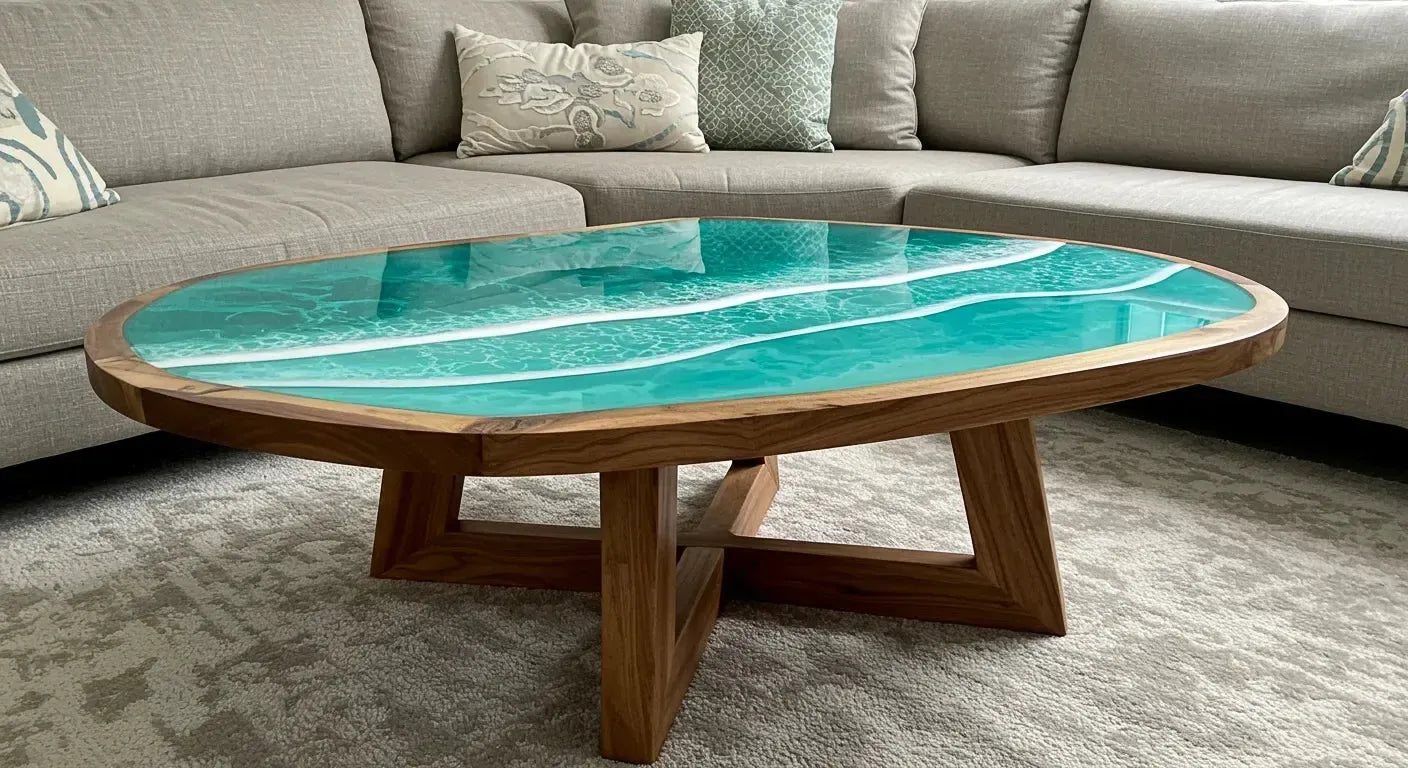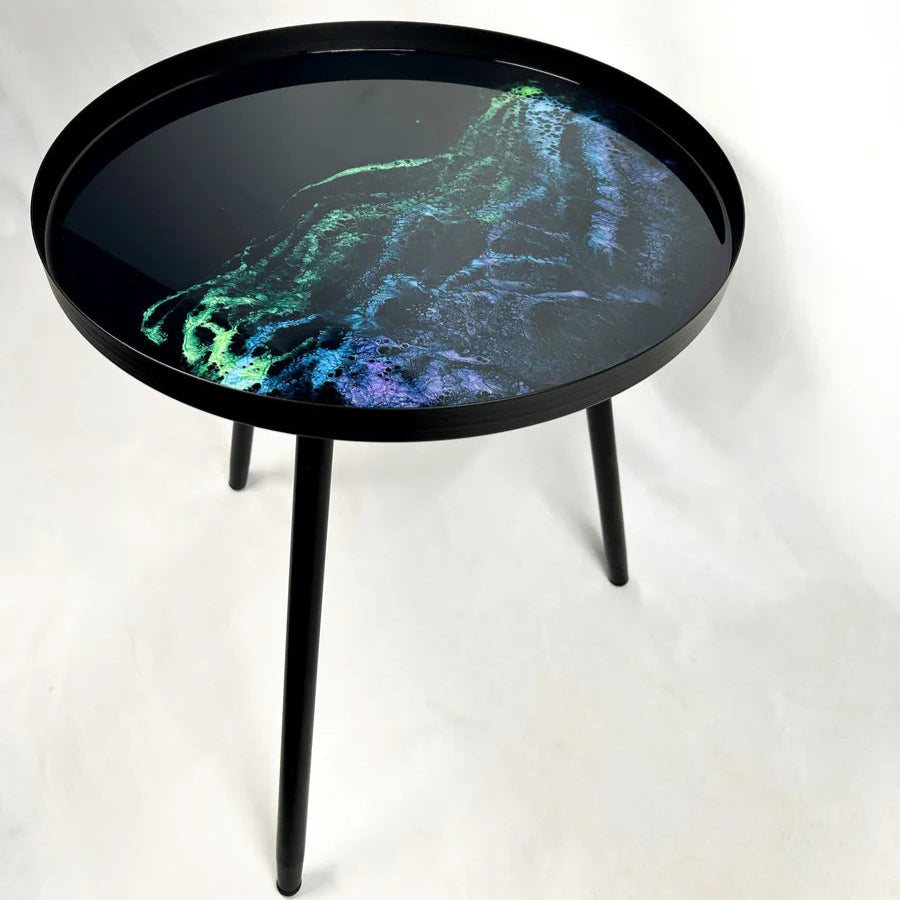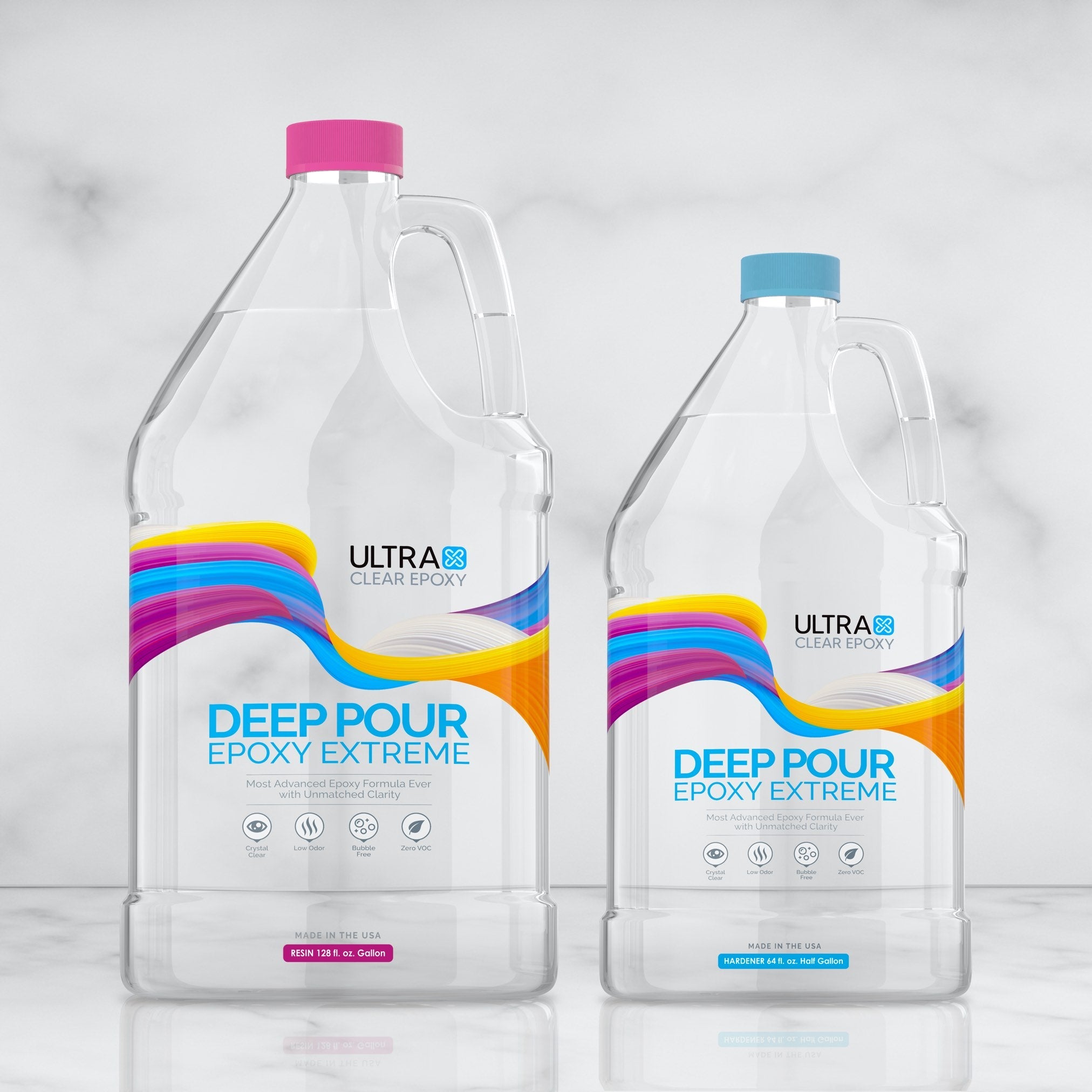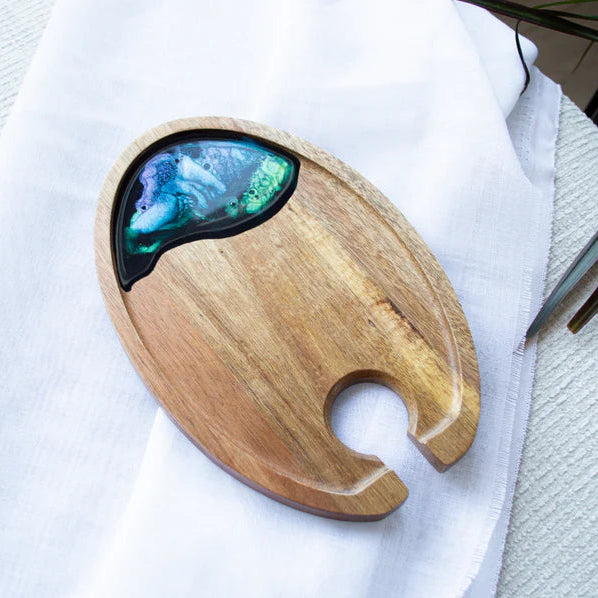I didn’t set out to make a rulebook. I just kept messing up. Overheating pours. Buying the wrong resin. Pouring in cold temps. You name it—I’ve probably done it. But over time, those failures started turning into patterns. And those patterns? They became my rules.
This blog isn’t about tutorials. It’s about what I learned the hard way after building epoxy tables in every season, with every mistake, on every kind of wood. Whether you’re just starting out or looking to improve, these “rules” might save you some frustration—or at least make you feel less alone in the chaos.

The Resin Rule: Not All Epoxy Is Created Equal
Cheap resin is a false economy
I’ve been lured by low-cost resins before. Big mistake. Some cured cloudy, others stayed tacky for days. What actually worked? Deep pour epoxy built for tables that need depth and clarity.
Tabletop vs. Deep Pour
If it says "tabletop epoxy," it’s not for pours thicker than 1/8 inch. You’ll risk overheating or cracking. For anything over ½", you need a slow-curing deep pour formula. Here’s what I wish I knew about the difference early on.
The Mold Rule: Build Like You’ll Never Get a Second Chance
My first mold leaked like a sieve. Now I treat every form like it has to survive a flood. I use melamine, silicone caulk, and clamps that feel excessive until the pour starts. If it fails at this stage, it’s game over.
The Temperature Rule: Resin Hates the Cold
I once poured resin in a 58°F garage. The result? A gummy, cloudy mess that took weeks to cure—and never fully hardened. Now I keep the shop at 70°F minimum. Resin needs warmth to do its thing.
The Patience Rule: Slow Down, or You'll Pay Later
Every rushed pour has consequences
I get it—you want the final look. But impatience costs more than time. It costs clarity, strength, and sometimes the whole slab. These days, I pour in stages and walk away before I mess with it too much.

The Dust Rule: Sanding Isn’t Just a Step—It’s the Finish
I used to rush the sanding. Big mistake. That cloudy haze you see in bad tables? Usually from skipping grits or going too fast. Now I finish every table up to at least 800 grit, sometimes 1200. And I never skip this final topcoat.
The Finish Rule: Matte, Gloss, or Something in Between?
Clients always ask: “Do I need a glossy finish?” Not necessarily. I actually prefer satin finishes on some pieces—it shows fewer fingerprints and gives a softer look. But no matter what, I always seal the wood properly, or it’ll drink the resin dry.
The Design Rule: Don’t Just Make What’s Trending
I’ve made farmhouse tables, crystal inlays, even a few bullet-infused builds. What I’ve learned? The tables that last aren’t trendy—they’re personal. Build with intent, not just Pinterest fuel.
The Truth Rule: Not Every Table Will Be a Success
Some of my early builds didn’t sell. Some cracked. Some just looked... off. But every one taught me something. If you’re only in this for perfection, resin work will break you. If you’re in it to learn? You’ll surprise yourself.

Want to See These Rules in Action?
Check out some of the builds that pushed me to figure all this out:
- How I build epoxy tables from start to finish
- Adding LED lights to an epoxy table
- What went wrong (and right) with an ocean resin pour
Got questions about your own build? Just reach out—I’ve probably made the same mistake.
— Solomon
Founder, The Resin Society
Started with small resin tables in my apartment — now building a global community of artists, collectors, and custom design lovers. resinsociety.net







Share: